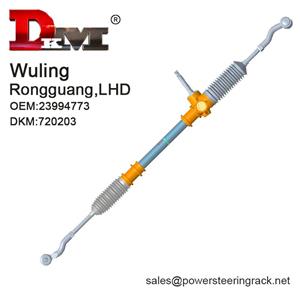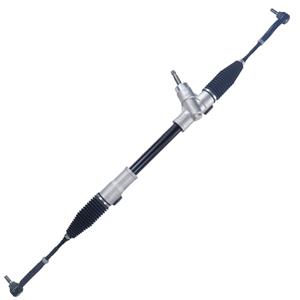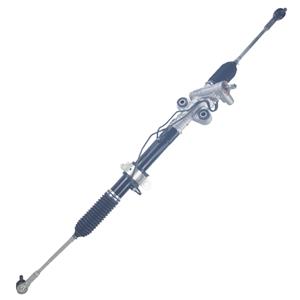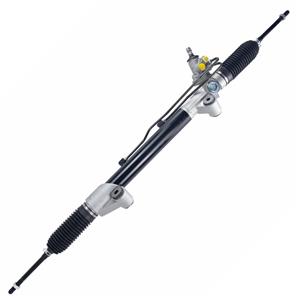Is power steering rack leakage a serious problem?
The power steering system is an integral part of modern cars, helping drivers to steer more easily, especially at low speeds or when turning. As one of the core components of the power steering system, the power steering rack plays a vital role. With the help of the steering rack, the driver can complete complex steering operations with minimal physical effort. However, as the vehicle is used, the hydraulic components in the power steering system may fail, and one of the most common problems is power steering rack leakage.
So, is power steering rack leakage a serious problem? What impact will rack leakage have on vehicle performance and safety? This article will comprehensively explore whether power steering rack leakage is a serious problem from multiple aspects such as technology, driving experience and safety.
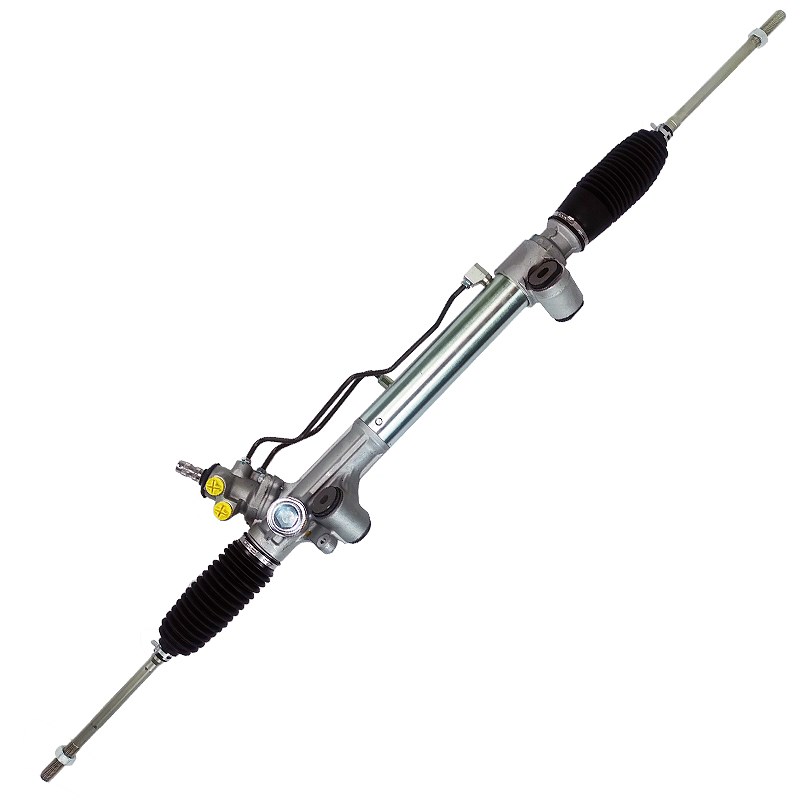
What is a power steering rack?
Before discussing the leakage problem, you first need to understand how the power steering rack works. There are three common forms of power steering systems: Hydraulic Power Steering (HPS), Electric Power Steering (EPS) and Electro-Hydraulic Power Steering (EHPS). Among them, the HPS system relies on hydraulic oil (or steering fluid) as a medium to provide power to the steering rack.
The power steering rack is an important mechanical component that connects the steering wheel and the wheels. When the driver turns the steering wheel, the rotation of the steering wheel is transmitted to the gear mechanism through the steering column, and the gear meshes with the rack, causing the rack to move laterally to control the steering of the wheel. The power steering pump provides additional power to the movement of the steering rack by pressurizing the fluid, reducing the resistance of the driver to operate the steering wheel.
Composition of power steering rack
The power steering rack is usually composed of the following main components:
● Gear and rack system: The interaction between the gear and the rack is the core of the steering function.
● Power steering pump: A pump used to pressurize the fluid in the hydraulic system.
● Hydraulic oil pipe: The pipe connecting the hydraulic pump to the steering rack, used to transfer pressurized fluid.
● Seals and gaskets: Sealing devices that prevent hydraulic fluid from leaking.
When these seals or gaskets are aged, worn or damaged, the steering rack may leak fluid.

What are the reasons for power steering rack leakage?
Power steering rack leakage is a problem that many car owners may encounter when using their vehicles for a long time. This problem may occur in many situations, and its root cause is usually related to the mechanical structure of the vehicle, its age and driving habits. Here are some common reasons for leakage:
1. Aging or damage of seals
The seals and O-rings in the power steering system are key components to prevent fluid leakage. However, over time, rubber seals may age, become brittle or crack due to external factors such as heat, cold and pressure. When the seals are no longer effective, hydraulic fluid will seep out of the system, causing leakage problems.
2. Worn or broken hydraulic oil pipes
The hydraulic oil pipe connects the power steering pump and the rack, and the hydraulic oil is transferred to the steering rack through the pipe to provide power assistance. As the vehicle travels, the oil pipe may be damaged by long-term vibration, external impact or contact with high-temperature components. Once the oil pipe breaks, the fluid will leak rapidly.
3. Wear on the rack surface
The internal parts of the power steering rack are constantly rubbed, and these parts may wear or deform over time. This situation will cause the fit between the rack and the seal to no longer be tight, resulting in leakage.
4. Improper use or improper maintenance
If the vehicle is often driven under extreme conditions, such as frequent sharp turns, long-term full-load driving or use in harsh road environments, the power steering system will be subject to greater loads. These improper use methods may accelerate the aging and damage of parts and increase the risk of leakage. In addition, long-term neglect of the maintenance of the power steering system will also lead to hydraulic oil contamination and deterioration of fluid quality, thereby increasing the probability of rack leakage.

What are the symptoms of power steering rack leakage?
The problem of power steering rack leakage usually does not occur suddenly, but there are a series of precursors. Car owners can judge whether there is a leakage problem through some symptoms. Here are some common symptoms of leakage:
1. Heavy steering
The biggest advantage of the hydraulic power steering system is that it provides power assistance, allowing the driver to easily turn the steering wheel. If the steering rack leaks, the hydraulic oil level will drop, the system will not be able to provide enough power assistance, and the driver will feel that the steering becomes heavy, especially when driving at low speed or parking.
2. Abnormal steering noise
Abnormal steering noise is usually caused by insufficient hydraulic oil. In the case of insufficient hydraulic oil, the hydraulic pump will not work properly and may make a sharp buzzing or grinding sound. This noise is particularly easy to hear when turning the steering wheel, especially at low speed or parking.
3. Hydraulic oil leakage
The most intuitive leakage is hydraulic oil seepage at the bottom of the vehicle or near the power steering rack. Usually, the hydraulic oil will show red or brown oil marks. If you find traces of similar oil on the ground when parking, it is likely that the power steering system is leaking.
4. Hydraulic oil level drops
The vehicle's hydraulic power steering system has a special hydraulic oil reservoir, and the owner can determine whether the level is normal by checking the level gauge. If you find that the fluid level continues to drop and you need to add hydraulic oil frequently, it means that there may be a leakage problem in the system.
What are the risks of power steering rack leakage?
Power steering rack leakage is not only a maintenance trouble, it may also bring a series of serious driving risks. If the leakage problem is ignored or delayed, the consequences may be very serious.
1. Impact on driving safety
The main function of the power steering system is to help the driver turn the steering wheel easily and ensure that the vehicle can steer flexibly and safely. Once a leak occurs, the hydraulic pressure of the system will drop, resulting in weakened power assistance or complete failure. In this case, the driver needs to use more force to turn the steering wheel, especially parking and turning operations at low speeds will become very difficult. This not only increases driving fatigue, but may also delay response in emergency situations and increase the risk of accidents.
2. Increased wear of parts
In addition to providing power assistance to the system, hydraulic oil also acts as a lubricant. When the hydraulic oil is insufficient or leaking, the friction between the power steering rack and the gears will increase, causing these parts to wear faster. Over time, the parts are severely worn, and the entire steering system may need to be replaced instead of just repairing the leak.
3. Damaged hydraulic pump
The power steering pump is responsible for pressurizing the hydraulic oil and transferring the fluid to the steering rack through the oil pipe. If the hydraulic oil is insufficient, the pump will be overloaded and easily cause damage to the pump. Once the hydraulic pump is damaged, the repair cost will be higher, and the entire power steering system will fail completely.
How to deal with power steering rack leakage?
In the face of power steering rack leakage, car owners should take active measures to check and repair it. Here are some common ways to deal with leakage problems:
1. Check the hydraulic oil regularly
Car owners can detect problems in time by regularly checking the level and quality of the hydraulic oil. The hydraulic oil reservoir of the steering system is usually located under the hood, and car owners can check whether the level is within the normal range during each maintenance.
2. Check seals and oil pipes
If the vehicle has symptoms of leakage, car owners should check the seals, O-rings and hydraulic oil pipes as soon as possible for signs of damage or aging. Replacing damaged parts in time can prevent the leakage problem from worsening.
3. Seek professional repair services
The power steering system is a complex hydraulic-mechanical system. If the car owner finds a leakage problem, it is best to go to a professional repair shop for inspection and repair in time. Professional technicians can determine the specific cause of the leakage through detailed inspection and replace the corresponding parts.

Power Steering Rack Supplier with Extensive Experience
With over 25 years of experience in the automotive industry, Guangdong Diamond Auto Parts Co., Ltd. (DKM) is your reliable source for high-quality power steering gears. Our factory in Foshan, China, is equipped with over 280 advanced machines to produce steering gears for leading car brands such as Toyota, Honda, and Mitsubishi. If you're looking to purchase high-quality steering gears at wholesale prices, DKM offers affordable rates and fast delivery. Contact us today for quotes and special offers!

